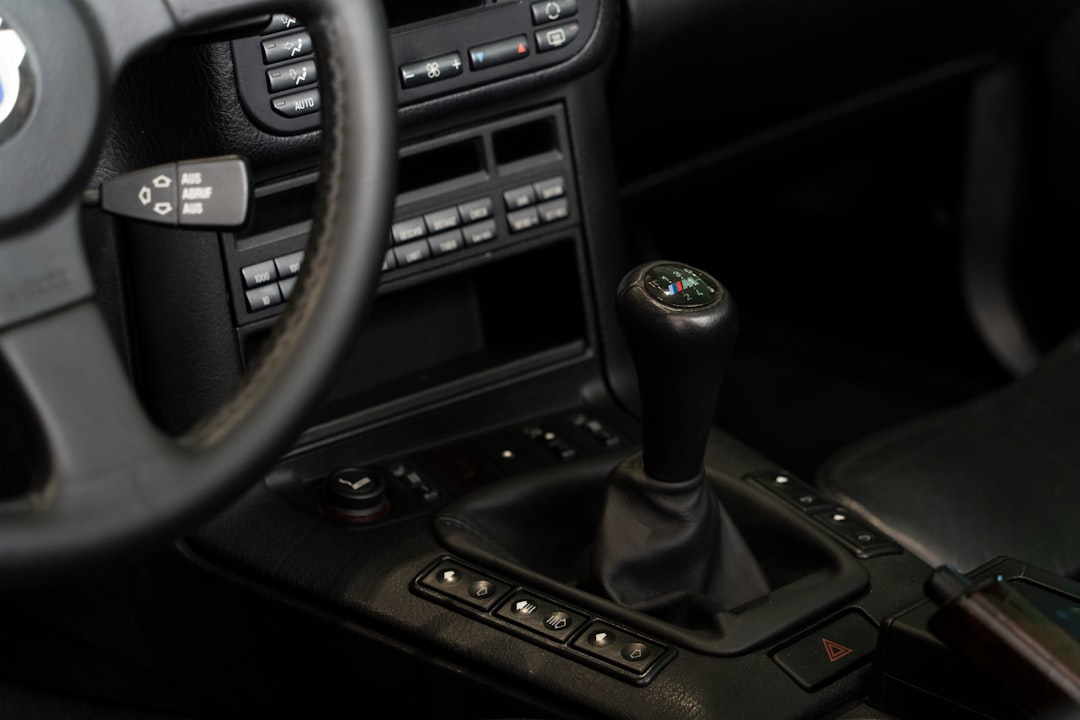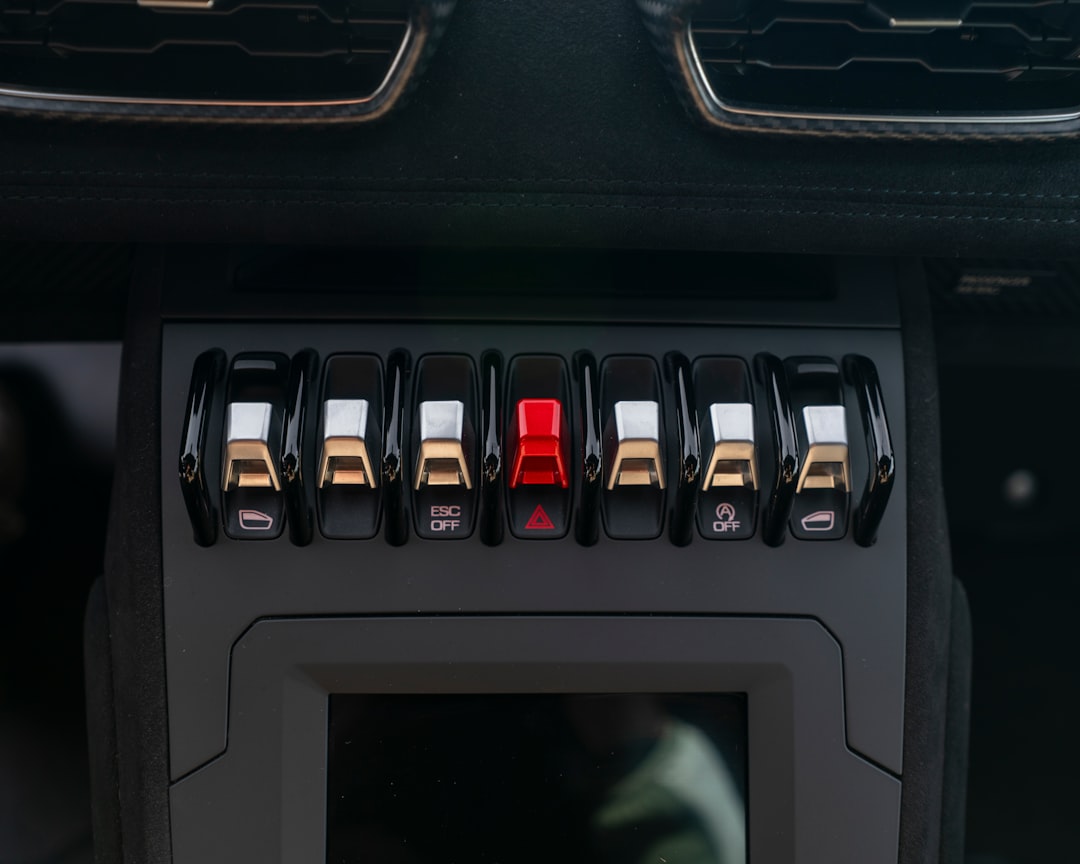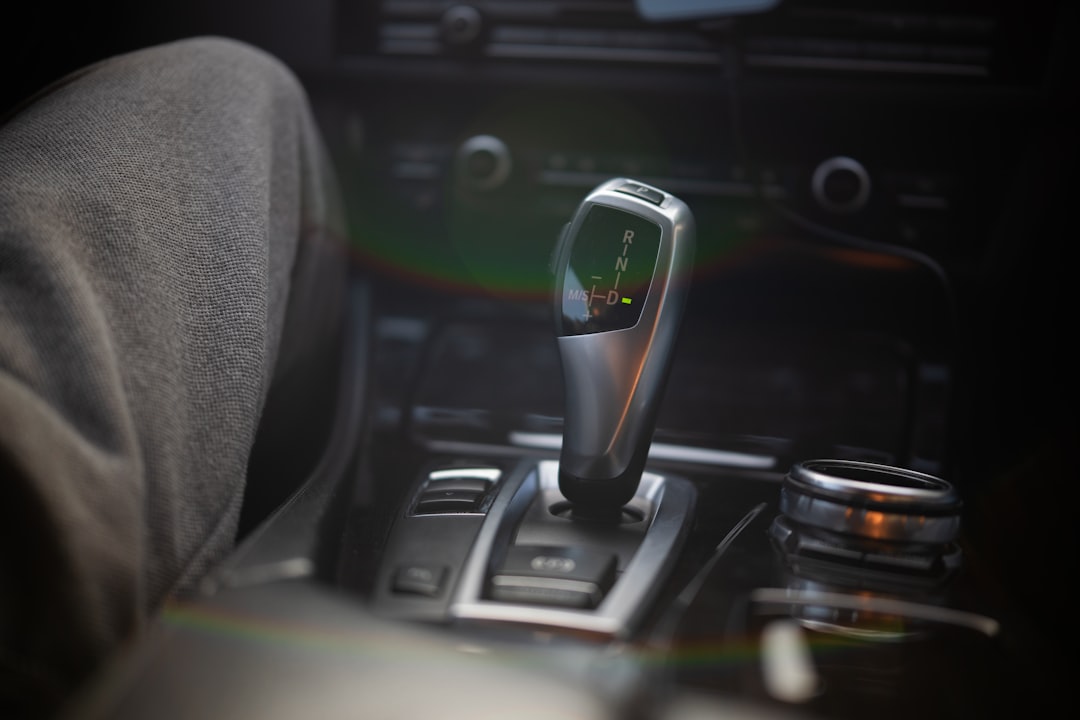

Engage prospects with a scan and streamline customer engagement with FREE QR code marketing tools by Sona – no strings attached!
Create a Free QR CodeFree consultation

No commitment

Engage prospects with a scan and streamline customer engagement with FREE QR code marketing tools by Sona – no strings attached!
Create a Free QR CodeFree consultation

No commitment
Car hand control installers play a pivotal role in making vehicles more accessible for drivers with mobility challenges. Yet, amid rising demand, many face mounting hurdles beyond simply fitting new equipment. Valuable prospects sometimes go unnoticed because their inquiries, whether in person or online, are not fully captured by legacy systems. Providers juggle complex regulatory and insurance documentation, while fielding questions from customers who need immediate, transparent answers. This reliance on outdated approaches like static brochures, paper forms, or disjointed intake processes not only slows engagement but also risks losing high-intent leads to faster competitors.
Increasingly, QR codes are empowering car hand control installers to bridge these gaps, using platforms like Sona QR. By adding digital access points to every physical interaction such as service desks, waiting areas, demo vehicles, or event booths, installers can deliver appointment bookings, up-to-date compliance info, and product guides at the point of interest. This not only improves responsiveness but also surfaces actionable insights on who is engaging, with what content, and where in the funnel anonymous traffic is slipping through the cracks.
This article explores how QR code strategies help solve real operational and marketing pain points, enabling hand control installers to strengthen compliance, personalize outreach, and capture every valuable lead along the customer journey.

For many hand control installers, critical moments of customer interest remain undocumented, meaning high-value prospects are not tracked and follow-up is delayed. QR codes help modernize engagement and capture intent at every step. By placing scannable codes in places where customers already pause, installers can turn fleeting curiosity into qualified demand. A short scan replaces complicated forms and long conversations, letting teams keep the experience simple, supportive, and measurable.
Start by mapping every offline moment in your business where customers ask questions or show interest. From that map, replace analog bottlenecks with QR-powered journeys. A brochure becomes an interactive guide, a paper intake form becomes a mobile-first workflow via Google Forms, and a printed warranty card becomes a personalized owner portal. When every touchpoint routes to a digital destination, you capture richer data and resolve customer needs faster.
With multi-level tracking from scan to booked installation, QR code platforms allow installers to address the recurring frustration of missed, anonymous opportunities. The result is a system where every potential lead becomes visible, qualified, and nurtured without adding administrative overhead or friction for customers.

Installers frequently struggle to connect offline interactions such as walk-ins or event interest to actionable digital follow-ups. Anonymous foot traffic and missed form fills compound into lost leads and slower pipeline growth. As adoption accelerates in automotive, QR codes are here to stay. QR codes resolve these pain points by turning every physical asset into a trackable digital gateway and every conversation into a measurable step in the journey.
Even better, QR codes remove the need for app downloads or lengthy web searches. A scan can deliver curated service information, compliance checklists, or transparent cost breakdowns in seconds. For customers who are navigating mobility changes, this level of immediacy and clarity builds trust and protects against the confusion that often delays decisions.
By closing the data gap between physical and digital engagement, QR codes surface intent signals from even the most casual offline interaction. Faster follow-up discourages competitors from capturing leads overlooked in slower, less integrated workflows and helps your business stand out as both responsive and accessible.
Deciding which QR format fits each stage of the customer journey is crucial for countering incomplete or outdated customer records. The right format makes it easy for prospects to act and for your team to capture the context you need to serve them well. For mobility-focused installations, three formats tend to drive the most value: web links, forms, and contact cards. Each can be used in showrooms, on vehicles, in partner clinics, and across direct mail.
Dynamic QR solutions offer the flexibility to update offerings or messaging instantly, which is essential when industry standards, service options, or local regulations change unexpectedly. With a platform like Sona QR, you can manage all code formats centrally, swap destinations without reprinting, and monitor performance across teams and locations.

Lead generation stalls when prospective customers remain anonymous after browsing a showroom, sitting in a waiting room, or attending a demo event. Strategic QR code placement turns these silent engagements into measurable opportunities that can be nurtured with personalized follow-up. The key is to place codes at eye level where decisions are made, to pair them with explicit benefits, and to use unique codes for each location to simplify attribution.
Consider your full ecosystem: showrooms, service bays, rehab clinics, mobility events, and the vehicles themselves. Each environment produces different questions and expectations. A waiting room poster should promise something practical such as eligibility checks or pricing guidance, while a demo-vehicle sticker should emphasize immediate actions such as booking an install or watching a quick tutorial about a hand control model.
This approach closes the gap between offline engagement and digital nurturing, driving measurable growth through each phase of the funnel. When scans are tagged by placement, you learn exactly which environments and partners deliver the most qualified demand.

Many installers find that even after initiating contact, lead information is captured too late. Customers may leave a booth or clinic with questions unanswered, opening a window for competitors to step in. QR codes help compress the time between interest and action by turning every physical touchpoint into a conversion path that your team can track and manage.
Focus on use cases that either accelerate the decision to book an installation, remove confusion about compliance, or reduce the burden of post-install support. When these workflows run through QR-enabled experiences, you eliminate manual steps, minimize back-and-forth calls, and capture data you can use for better service.
With these touchpoints, installers reduce the delay between intent and outreach, ensuring no lead slips away due to slow or incomplete capture. Over time, you build a library of high-performing destinations that can be reused, refined, and localized.
Many teams still struggle with generic analytics and limited insight into who engages with their materials. QR code scans provide richer signals: the place, the time, the prompt that triggered action, and the content consumed. When you wire those signals into your CRM and ad platforms, you get smarter audiences that you can nurture differently depending on the stage of their journey and their most pressing needs.
Start by aligning QR placements to your buyer journey. A flyer at a community mobility event may indicate early curiosity, while a code on an insurance FAQ suggests a prospect who is closer to booking. Treat these scan events as intent data. Use them to trigger the right follow-up such as an email with installation timelines, a call from a specialist, or a retargeting ad that speaks to financing or vehicle compatibility.
With Sona QR, each code becomes a smart entry point into your funnel, capturing data you can act on immediately. The more granular your tagging and syncing, the more efficient your retargeting and the more helpful your customer experience.
Car hand control installers often operate across a patchwork of channels: clinic partnerships, community events, showrooms, service bays, direct mail, and social media. Without a unifying mechanism, it is hard to connect the dots, personalize messages, or prove which activities drive revenue. QR codes unify those channels by turning every physical and digital asset into a coordinated system that produces consistent data and delivers customers to the right destination.
To maximize impact, plan your QR placements alongside your campaign calendar. If you are sponsoring a mobility fair, align booth signage codes with pre-event mailers and post-event emails so that every scan contributes to the same audience segments and lead scoring rules. If you are rolling out new models of hand controls, update code destinations to feature the newest content and ensure old materials point to current information.
QR codes serve as the offline onramp to your digital marketing engine. With a centralized platform like Sona QR, you can manage codes across channels, monitor performance in one dashboard, and sync scan data with your CRM and ad platforms to build a connected, measurable funnel.
Successful QR initiatives follow a clear, repeatable process. Treat each campaign like a product: define the goal, choose the right code, design for the environment, deploy with discipline, and iterate based on data. The steps below align with how installers operate in the field and in partnership with clinics and insurers.
Pinpoint the specific bottleneck you want to solve. Are inquiry captures slow in the showroom, are compliance forms ignored at clinics, or is review capture inconsistent after installations? Start with the challenge that affects your growth and customer experience most.
Select the format that best fits the action you want. Many installer flows benefit from dynamic codes so you can edit destinations over time and track performance without reprinting.
Design for clarity and scannability in the real world. The best code will not perform if people cannot scan it quickly or do not understand the benefit.
Roll out codes where decisions are made. Use unique codes per placement so you learn which environments generate qualified demand.
Treat performance data as a weekly feedback loop. Adjust copy, placement, and destinations to reduce friction and increase conversions.
Relying on generic web analytics often leaves installers blind to the full customer journey, especially when key signals occur offline. QR code analytics extend visibility to the moment someone notices a poster, flips a brochure, or sits in a demo vehicle. That context strengthens your forecasting, improves your follow-up timing, and helps you allocate budget based on what truly drives installs. For measurement rigor, explore offline attribution frameworks that connect physical touchpoints to outcomes.
Granular tracking is only useful if it connects to outcomes. Instrument your funnel so that scans, form fills, document uploads, and appointments are all linked to the original touchpoint. Over time, you will see clear patterns: which clinic posters move people from awareness to consideration, which mailers produce booked consults, and which aftercare assets reduce support calls.
With Sona QR and Sona.com, you can go beyond scan counts. Track performance by placement, sync data to your CRM in real time, and use multi-touch attribution to connect offline scans to pipeline and closed revenue. This closes the loop and positions QR as part of a performance marketing strategy, not just a convenience feature.
Once your initial campaigns are in motion, scale with discipline. Standardize how you deploy, tag, and review QR efforts so that each new placement strengthens your data and your customer experience. Make your codes work harder by connecting them to automated follow-ups that keep prospects moving and keep owners supported.
It also helps to innovate with placements. Anywhere a customer pauses is a candidate: driver folders, glovebox cards, service bay wall placards, or even post-install magnets. Creativity increases surface area, but the promise next to the code must always be specific and useful so that scans translate into action.

QR codes already help mobility businesses capture demand and support customers more responsively. When designed with a clear benefit and placed where decisions happen, they reliably improve conversion and streamline operations. The following examples illustrate how different teams have applied QR strategies in environments similar to car hand control installations.
First, consider demo assets that lead to personalized guidance. A mobility center added QR codes to every demo vehicle that linked to a short quiz titled Which Hand Control Is Right for You. The quiz asked about vehicle type, strength, and preferred control style, then recommended compatible models and offered a one-click booking link. The center surfaced dozens of previously untracked inquiries and increased consult bookings significantly in the first quarter. Similar tactics are appearing for used car dealers.
Creative execution matters. Use short benefit-driven CTAs such as Scan for a 2-minute fit quiz, Scan to check insurance eligibility, or Scan to book your installation this week. Pair these with short video explainers to humanize the experience and build trust quickly.
High-performing QR programs share a few habits: they are relentlessly clear about the benefit, they design for the real world, and they route every scan to an outcome that feels helpful in the moment. Underperforming programs usually suffer from vague calls to action, poor placement, or destinations that are slow or confusing on mobile. For broader tactics, review QR codes in marketing.
Before launching, walk the journey yourself. Stand where a customer would stand, scan the code under the same lighting, and time the steps to booking or uploading documents. Eliminate any clicks that do not serve the outcome. If a clinic poster generates scans but not appointments, strip the destination down to a single short form and a calendar picker.
QR codes are steadily becoming essential for car hand control installers intent on bridging the persistent gap between offline engagement and digital lead capture. By transforming physical spaces such as showrooms, clinics, events, and vehicles into connected digital journeys, installers ensure that every customer touchpoint is an opportunity for actionable data, compliance education, and targeted follow-up.
Embedding QR codes thoughtfully throughout the customer journey reduces missed opportunities, surfaces hidden demand, and provides timely, relevant pathways to further support or services. Centralized management and analytics empower installers to recognize which tactics truly move the needle, adapting to regulatory change and competitive market shifts with agility.
Ultimately, leaning into data-driven QR strategies positions installers as both leaders in accessibility and responsive partners to their communities. If you are ready to get started, generate and track your first codes with a platform like Sona QR, connect scan data to your CRM on Sona.com, and turn every scan into a step toward a safer, more independent driving experience for your customers. Start creating QR codes for free.
QR codes have revolutionized the car hand control installers industry by transforming traditional service interactions into seamless, measurable engagement opportunities. Whether it’s simplifying access to installation guides, providing instant customer support, or streamlining appointment scheduling, QR codes enable installers to deliver a superior customer experience while capturing valuable data to optimize operations and grow their business.
Imagine empowering your customers to instantly access personalized installation instructions or maintenance tips with a simple scan—reducing confusion and follow-up calls while boosting satisfaction. With Sona QR, you can create dynamic, trackable QR codes in seconds, update content on the fly without reprinting, and connect every scan to actionable insights that drive customer loyalty and revenue growth.
Start for free with Sona QR today and unlock the full potential of QR codes to enhance your car hand control installation services and accelerate your business success.
Installing hand controls makes vehicles more accessible for drivers with mobility challenges by enabling easier and safer vehicle operation.
The article does not specify the cost to install hand controls in a vehicle.
While the article does not list locations, using QR codes linked to booking forms and contact information can help locate and connect with certified installers.
The article mentions various hand control models and compatibility quizzes but does not detail specific types; installers often provide tailored recommendations based on vehicle type and driver needs.
Maintenance support can be accessed via QR code stickers placed on vehicles that link to maintenance videos, service reminders, and live support options.
QR codes convert offline interactions into trackable digital actions, enabling instant appointment bookings, compliance information, product guides, and faster follow-up.
Useful QR code types include web links to guides and demos, appointment booking forms, vCards for contacts, feedback and compliance forms, and app download portals.
QR codes should be placed at decision points such as showrooms, demo vehicles, partner clinics, waiting areas, direct mail, event booths, and technician materials.
By using dynamic QR codes with analytics, installers can track scans by location, time, and content engagement, linking these to booked installs and completed forms for ROI measurement.
Best practices include clear calls to action, testing for scannability under real conditions, using dynamic codes for easy updates, placing codes strategically, and training staff to promote scanning.
Scan data tagged by intent and placement can trigger personalized follow-up via email, calls, or retargeting ads, improving conversion rates and customer experience.
Installers face challenges like missed leads, complex paperwork, and unclear customer communication, which QR codes address by digitizing interactions, simplifying compliance, and capturing intent in real time.
Dynamic QR codes allow updating destinations without reprinting, enable tracking and A/B testing, and help maintain current compliance and product information.
Yes, QR codes link customers to compliance checklists, secure document upload portals, and insurance FAQs, reducing delays and simplifying approvals.
QR codes placed in vehicles provide access to maintenance guides, service reminders, live support, and can signal upsell opportunities through usage data.
Use Sona QR's trackable codes to improve customer acquisition and engagement today.
Create Your FREE Trackable QR Code in SecondsJoin results-focused teams combining Sona Platform automation with advanced Google Ads strategies to scale lead generation

Connect your existing CRM

Free Account Enrichment

No setup fees
No commitment required

Free consultation

Get a custom Google Ads roadmap for your business






Launch campaigns that generate qualified leads in 30 days or less.
